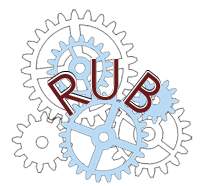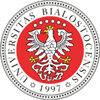Proszę używać tego identyfikatora do cytowań lub wstaw link do tej pozycji:
http://hdl.handle.net/11320/18920| Tytuł: | Trauma Wielkiej Wojny w wybranych opowiadaniach Wasyla Stefanyka. Lektura w kontekście twórczości pisarza |
| Inne tytuły: | The trauma of The Great War in selected stories by Vasyl Stefanyk. Reading in the context of the writer’s work |
| Autorzy: | Olszewska, Maria Jolanta |
| Słowa kluczowe: | land peasant suffering death war homeland |
| Data wydania: | 2022 |
| Data dodania: | 1-paź-2025 |
| Wydawca: | Collegium Columbinum SJ |
| Źródło: | Modernizm polski i ukraiński. Paralele. Studia, redakcja naukowa Mariya Bracka, Jarosław Ławski, Rostysław Radyszewski, Kraków 2022, s. 65-98 |
| Seria: | Colloquia Orientalia Bialostocensia;57 |
| Konferencja: | Międzynarodowa Konferencja Naukowa "Modernizm polski i ukraiński. Warianty narodowe: paralele i dialogi", Białystok-Kijów, 15 października 2021 roku |
| Abstrakt: | Vasyl Stefanyk (1871–1936) is one of the most outstanding Ukrainian writers of the late nineteenth century and the first half of the twentieth century. He created his own form of literary expression similar to a short story or a picture. His stories present the life of Ukrainian peasants. For this purpose, he used free indirect speech. He wanted to reliably recreate the truth about the peasant’s soul. He wrote in the Pokuttia dialect, which additionally made his texts more credible. In his stories the most important themes are suffering, pain, orphanhood, disease and death. The world presents itself as a nightmare and torment. Stefanyk created a non-exotic image of his homeland Pokuttia. The image of World War I as seen through the eyes of a boy in Children’s Adventure fits in with the formula of this writing. In addition to these motifs, in Stefanyk’s works such as Mother Earth, Sons, The Boundary Line, Winter Grains, we find the land motif, which documents the strong relationship of Ukrainian peasants with land. Without it, they don’t exist.They work for land and die fighting for land. For Stefanyk, they are the subsoil of the nation. Stefanyk’s work is strongly mythologized. This allows a national philosophy to be included in his texts. The myth of “little homeland” present in it brings this work closer to the Blut-und-Boden-Dichtung literature, derived from the Romanticism, promoting irrationalism, instinct, and the mysticism of “blood and earth”. |
| Afiliacja: | Uniwersytet Warszawski |
| URI: | http://hdl.handle.net/11320/18920 |
| ISBN: | 978-83-7624-195-1 |
| metadata.dc.identifier.orcid: | 0000-0001-6230-0621 |
| Typ Dokumentu: | Book chapter |
| Właściciel praw: | © Uniwersytet w Białymstoku, Białystok 2022 © Collegium Columbinum, Kraków 2022 © Mariya Bracka, Jarosław Ławski, Rostysław Radyszewski, Kijów–Białystok 2022 |
| Występuje w kolekcji(ach): | Międzynarodowa Konferencja Naukowa "Modernizm polski i ukraiński. Warianty narodowe: paralele i dialogi", 15 października 2021 |
Pliki w tej pozycji:
| Plik | Opis | Rozmiar | Format | |
|---|---|---|---|---|
| M_J_Olszewska_Trauma_Wielkiej_Wojny_w_wybranych_ opowiadaniach.pdf | 399,88 kB | Adobe PDF | Otwórz |
Pozycja jest chroniona prawem autorskim (Copyright © Wszelkie prawa zastrzeżone)

